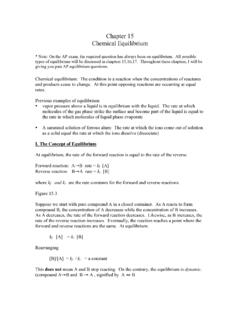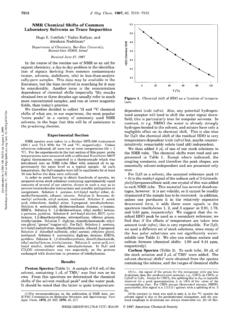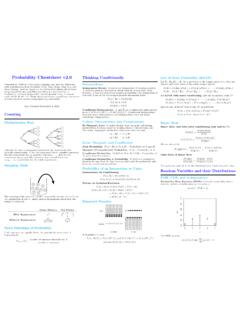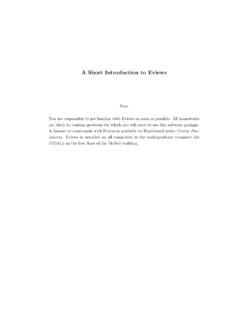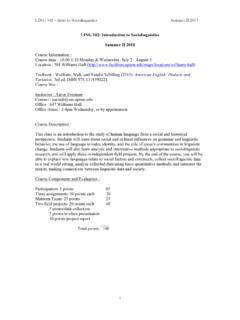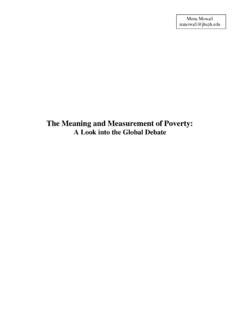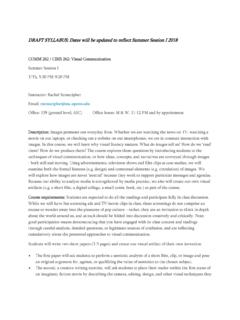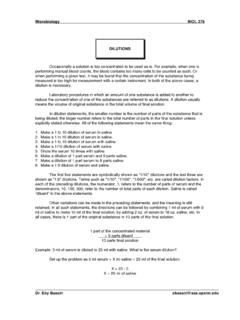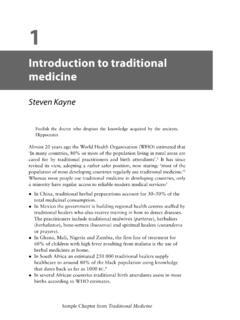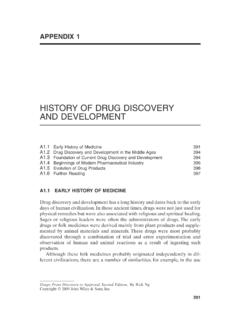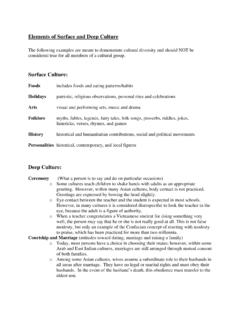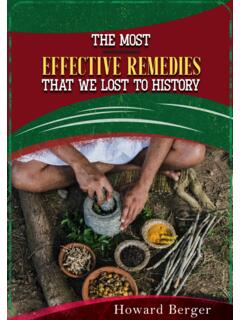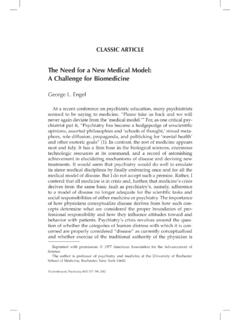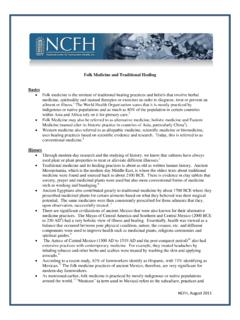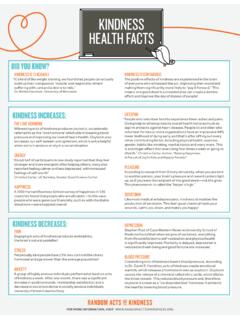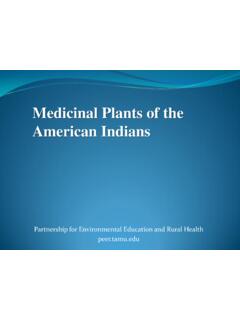Transcription of CURRENT HEALTH SCENARIO IN RURAL INDIA
1 Aust. J. RURAL HEALTH (2002) 10, 129 135 Blackwell Science, LtdOriginal ArticleCURRENT HEALTH SCENARIO IN RURAL INDIAA shok Vikhe Patil,1 K. V. Somasundaram2 and R. C. Goyal21 International Association of Agricultural medicine and RURAL HEALTH and 2 Department of Community medicine , RURAL Medical College of Pravara Medical Trust, Maharashtra, IndiaABSTRACT: INDIA is the second most populous country of the world and has changing socio-political-demographic and morbidity patterns that have been drawing global attention in recent years. Despite several growth-orientated policies adopted by the government, the widening economic, regional and gender disparities are posingchallenges for the HEALTH sector.
2 About 75% of HEALTH infrastructure, medical man power and other HEALTH resourcesare concentrated in urban areas where 27% of the population live. Contagious, infectious and waterborne diseasessuch as diarrhoea, amoebiasis, typhoid, infectious hepatitis, worm infestations, measles, malaria, tuberculosis,whooping cough, respiratory infections, pneumonia and reproductive tract infections dominate the morbidity pattern,especially in RURAL areas. However, non-communicable diseases such as cancer, blindness, mental illness, hyper-tension, diabetes, HIV/AIDS, accidents and injuries are also on the rise. The HEALTH status of Indians, is still a cause forgrave concern, especially that of the RURAL population.
3 This is reflected in the life expectancy (63 years), infantmortality rate (80/1000 live births), maternal mortality rate (438/100 000 live births); however, over a period of timesome progress has been made. To improve the prevailing situation, the problem of RURAL HEALTH is to be addressed bothat macro (national and state) and micro (district and regional) levels. This is to be done in an holistic way, with agenuine effort to bring the poorest of the population to the centre of the fiscal policies. A paradigm shift from thecurrent biomedical model to a sociocultural model , which should bridge the gaps and improve quality of RURAL life,is the CURRENT need.
4 A revised National HEALTH Policy addressing the prevailing inequalities, and working towardspromoting a long-term perspective plan, mainly for RURAL HEALTH , is WORDS: commercialisation of HEALTH , communicable diseases, HEALTH infrastructure, HEALTH policy, healthseeking behaviour, RURAL is drawing the world s attention, not only because ofits population explosion but also because of its prevailingas well as emerging HEALTH profile and profound political,economic and social 54 years of independence, a number of urbanand growth-orientated developmental programs havingbeen implemented, nearly 716 million RURAL people (72%of the total population), half of which are below thepoverty line (BPL) continue to fight a hopeless and con-stantly losing battle for survival and HEALTH .
5 The policiesimplemented so far, which concentrate only on growthof economy not on equity and equality, have widenedthe gap between urban and RURAL and haves andhave-nots . Nearly 70% of all deaths, and 92% of deathsfrom communicable diseases, occurred among the poorest20% of the , some progress has been made since inde-pendence in the HEALTH status of the population; this isreflected in the improvement in some HEALTH the cumulative impact of various measures and ahost of national programs for livelihood, nutrition andCorrespondence: Dr Ashok Vikhe Patil, President: Inter-national Association of Agricultural medicine and RURAL HEALTH ,c/o Pravara Medical Trust, Loni 413 736, AhmednagarDistrict, Maharashtra, INDIA .
6 E-mails: for publication January JOURNAL OF RURAL HEALTH shelter, life expectancy rose from 33 years at Independ-ence in 1947 to 62 years in 1998. Infant mortalitydeclined from 146/1000 live births in 1961 to 72/1000in 1999. The under 5 years mortality rate (U5MR)declined from 236/1000 live births in 1960 to 109/1000in Interstate, regional, socioeconomic class, andgender disparities remain high. These achievementsappear significant, yet it must be stressed that thesesurvival rates in INDIA are comparable even today onlyto the poorest nations of sub-Saharan RURAL populations, who are the prime victims ofthe policies, work in the most hazardous atmosphere andlive in abysmal living conditions.
7 Unsafe and unhygienicbirth practices, unclean water, poor nutrition, subhumanhabitats, and degraded and unsanitary environments arechallenges to the public HEALTH system. The majority ofthe RURAL population are smallholders, artisans andlabourers, with limited resources that they spend chieflyon food and necessities such as clothing and shelter. Theyhave no money left to spend on HEALTH . The RURAL peasantworker, who strives hard under adverse weather condi-tions to produce food for others, is often the first victim present paper attempts to review critically thecurrent HEALTH status of INDIA , with a special reference tothe vast RURAL population of the beginning of the twenty-first PRACTICES AND PROBLEMS IN RURAL INDIAR ural people in INDIA in general, and tribal populationsin particular, have their own beliefs and practices regardinghealth.
8 Some tribal groups still believe that a disease isalways caused by hostile spirits or by the breach of sometaboo. They therefore seek remedies through magico-religious practices. On the other hand, some RURAL peoplehave continued to follow rich, undocumented, traditionalmedicine systems, in addition to the recognised culturalsystems of medicine such Ayurveda, unani, siddha andnaturopathy, to maintain positive HEALTH and to preventdisease. However, the socioeconomic, cultural and politicalonslaughts, arising partly from the erratic exploitation ofhuman and material resources, have endangered the natu-rally healthy environment ( access to healthy andnutritious food, clean air and water, nutitious vegetation,healthy life styles, and advantageous value systems andcommunity harmony).
9 The basic nature of RURAL healthproblems is attributed also to lack of HEALTH literatureand HEALTH consciousness, poor maternal and child healthservices and occupational majority of RURAL deaths, which are preventable,are due to infections and communicable, parasitic andrespiratory diseases. Infectious diseases dominate themorbidity pattern in RURAL areas (40% RURAL : ). Waterborne infections, which account for about80% of sickness in INDIA , make every fourth person dyingof such diseases in the world, an Indian. Annually, million deaths and loss of 73 million workdays areattributed to waterborne groups of infections are widespread in ruralareas, as Diseases that are carried in the gastrointestinal tract,such as diarrhoea, amoebiasis, typhoid fever, infec-tious hepatitis, worm infestations and 100 million suffer from diarrhoea and choleraevery Diseases that are carried in the air through coughing,sneezing or even breathing, such as measles, tubercu-losis (TB), whooping cough and pneumonia.
10 Todaythere are 12 million TB cases (an average of 70%).Over million cases are added every year and37 000 cases of measles are reported every Infections, which are more difficult to deal with,include malaria, filariasis and kala-azar. These areoften the result of development. Irrigation brings withit malaria and filariasis, pesticide use has produced aresistant strain of malaria, the ditches, gutters andculverts dug during the construction of roads, andexpansion of cattle ranches, for example, are breedingplaces for snails and mosquitoes. About millionepisodes and over 1000 malarial deaths occur everyyear in An estimated 45 million are carriersof microfilaria, 19 million of which are active casesand 500 million people are at risk of third person in the world suffering from leprosyis an Indian.
